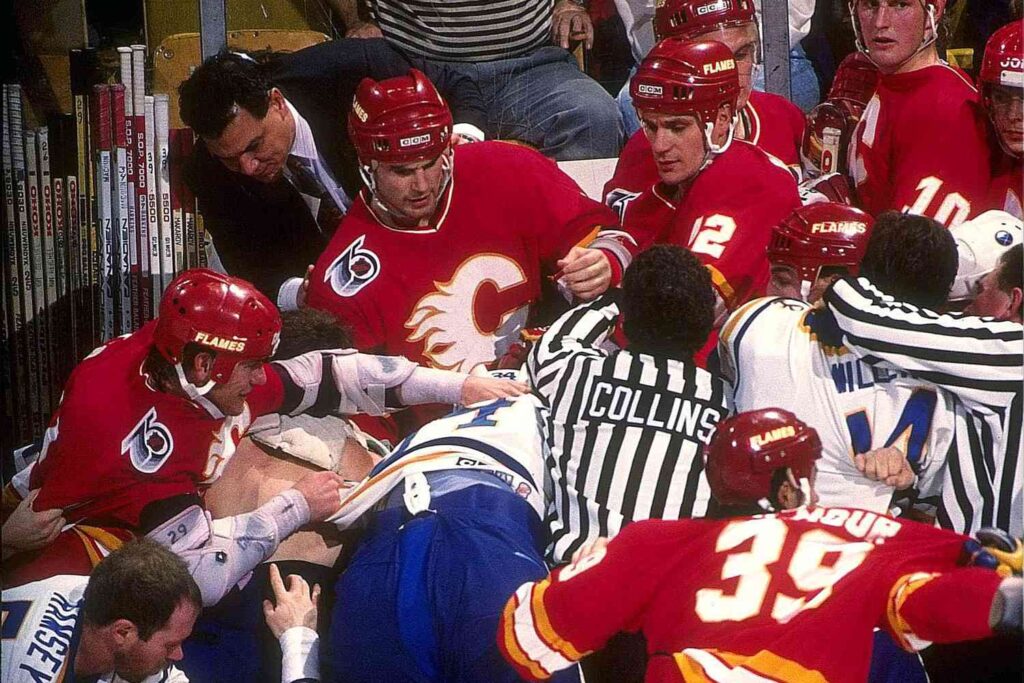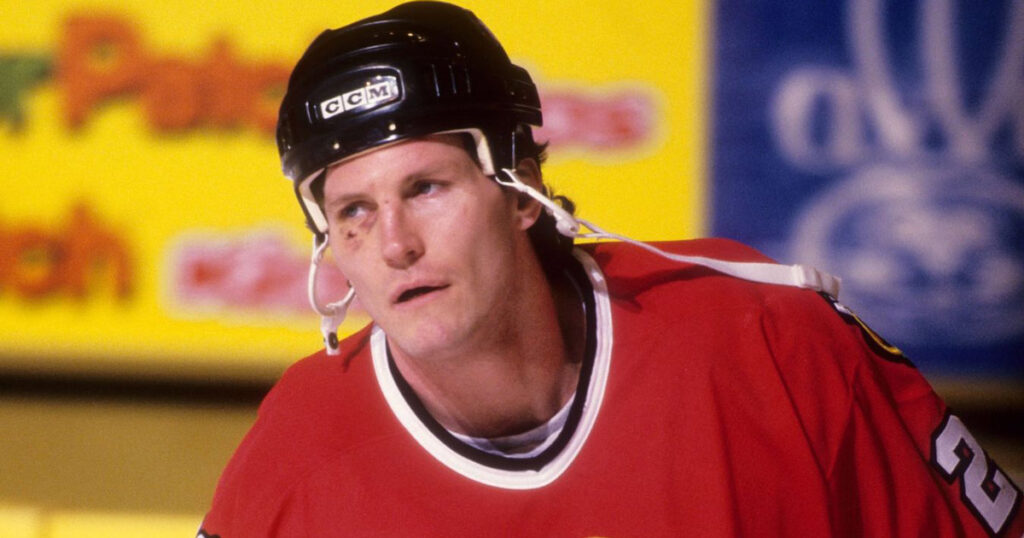Fighting has long been one of ice hockey’s most debated aspects. To outsiders, it may look chaotic, but within the sport, it serves a purpose. Fights often release built-up tension, protect star players from rough treatment, and can shift a game’s momentum. While most sports eject players for such actions, hockey still allows fighting under controlled conditions – a decision rooted in decades of history and a strong sense of honour among players.

History of Fighting in Hockey
To understand why fighting still has a place in modern hockey, it’s worth looking back at how it began and how it evolved through the decades.
Early Days: 1920s and the Birth of the Code
Fighting became part of professional ice hockey during the 1920s, especially in the NHL’s early years. Refereeing was inconsistent, equipment minimal, and players often enforced respect themselves. This led to the creation of an unwritten “code” — rules among players about when and how a fight was acceptable.
The code allowed fights between willing opponents, usually to settle disputes or defend teammates, but condemned ambushes or fighting unwilling players.
The Enforcer Era
From the 1960s to the 1990s, nearly every team had an enforcer — a player whose job was to protect teammates and maintain order. Legends like Bob Probert, Tie Domi, and Dave Semenko became fan favourites for their toughness and loyalty. Their presence deterred opponents from taking liberties with star players, and a well-timed fight could ignite a struggling team.
Safety Concerns and the Modern Game
In recent decades, growing awareness of head trauma and CTE has led many to question fighting’s place in hockey. Yet leagues have resisted a full ban. When fighting disappears, dangerous stick work and cheap hits often rise. Controlled, short bouts still act as a deterrent and are usually self-policed by players.
Fighting’s Role Today
Today’s hockey culture still respects the code, even if the role of the traditional enforcer has faded. Players now contribute both physically and technically. Fights are far less common — in the 2023-24 NHL season, the average was 0.18 fights per game, compared to 0.65 in the early 2000s.
While fighting no longer defines the game, it remains an accepted — if controversial — part of its identity.
Fighting Rules and Penalties
In professional hockey, fighting isn’t completely free of consequence. It’s regulated by specific rules designed to keep the game under control while recognising the sport’s physical nature. The penalties depend heavily on the league’s governing body — the NHL takes a more lenient, traditional approach, while the IIHF enforces stricter discipline.
The Five-Minute Major
In the NHL, when two players drop the gloves, both receive a five-minute major penalty for fighting. They serve this time in the penalty box, leaving their teams short-handed only if one side earns extra penalties. This rule allows the fight to settle on-ice disputes but prevents it from disrupting the entire match. Players are expected to stop once one of them goes down or officials step in.
Automatic Ejection in International Play
Under IIHF rules, fighting leads to an automatic game misconduct — immediate ejection from the match. The IIHF maintains that fighting has no place in international tournaments such as the World Championships or the Olympics. This strict stance reflects the European emphasis on speed, skill, and sportsmanship over physical confrontation.
The Instigator Rule
If a player is clearly seen starting the fight, that player receives additional penalties: 2 minutes for instigating, 5 minutes for fighting, and a 10-minute misconduct. The instigator rule discourages unnecessary or one-sided fights and aims to reduce situations where players attack opponents who are unwilling to engage.
Off-Ice Review and Mass Altercations
In both the NHL and domestic leagues, off-ice officials and disciplinary departments review fights after games. If they find intent to injure or repeat offences, suspensions or fines may follow.
Mass brawls — when multiple players fight at once — trigger even heavier sanctions. Teams can face bench penalties, game misconducts, and supplementary discipline for allowing a melee to escalate. Captains and coaches are often warned or fined if their bench leaves the designated area during such incidents.
Role of Enforcers in Hockey
For decades, the enforcer — or “tough guy” — was vital to every roster. Their role was to protect teammates and restore balance when opponents crossed the line. A well-timed fight could also shift momentum and fire up both crowd and bench, giving their team a needed spark.

Famous Enforcers in History
Several enforcers have become legends for their toughness and leadership:
– Bob Probert – remembered as one of the most feared yet respected fighters in NHL history.
– Tie Domi – known for his durability and ability to stand toe-to-toe with anyone.
– Georges Laraque – combined strength with discipline, rarely fighting without reason.
These players understood the balance between intimidation and control, earning respect even from rivals.
Decline in the Modern Game
Today, pure enforcers are rare. Modern hockey prioritises speed, skill, and versatility, making it difficult to carry a player whose only role is fighting. Current players are expected to contribute in multiple areas — forechecking, penalty killing, and scoring — while still being able to handle themselves physically if needed.
Fighting in Modern EIHL
Fighting still exists in the Elite Ice Hockey League (EIHL), but it’s far less common than in North American competition. The modern British game has evolved into a faster, more technical version of hockey, with fighting now seen as a situational rather than a strategic act.
Frequency and Comparison with the NHL
During recent seasons, the EIHL has averaged around 0.3 fights per game, slightly higher than the NHL’s 0.15. While that figure may seem small, it reflects how fighting remains a visible — though carefully controlled — part of the British professional scene. Most incidents happen when emotions run high after heavy hits or controversial plays rather than being premeditated.
Cultural Influence of European Players
The EIHL’s growing mix of European and North American players has shaped its approach to physical play. Many European skaters, especially from Scandinavian and Central European leagues, were developed under systems where fighting is strictly forbidden. Their influence has gradually reduced the acceptance of fighting in British rinks, leading to a more disciplined, technical style of hockey.
At the same time, imports from Canada and the US still bring a traditional North American edge – tough checking, emotional intensity, and the readiness to respond when opponents cross the line. This cultural blend keeps EIHL hockey competitive and unpredictable, appealing to both purists and new fans.
Betting on Fights in the EIHL
While fighting is far less frequent than it once was, some UK bookmakers occasionally offer special or prop markets on rivalry fixtures such as Sheffield Steelers vs Nottingham Panthers. These niche bets – often listed as “Will there be a fight?” or “Total Penalty Minutes” – attract attention among dedicated followers of the British game.
Such markets are not common and usually appear only for televised or high-intensity matchups. Odds tend to be modest, reflecting the sport’s low fight frequency (around 0.3 per game). Still, they highlight how the emotional side of hockey remains part of its appeal for both fans and bettors.
Fan Reaction in the UK
British fans see fighting as part of hockey’s heritage rather than its main draw. The crowd reaction remains electric when it happens, but supporters largely prefer the modern, skill-focused EIHL. The league tolerates spontaneous fights but reviews repeat offenders to keep the balance between tradition and safety.
